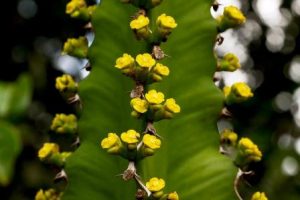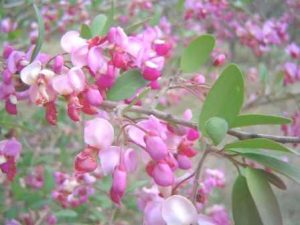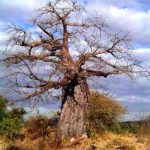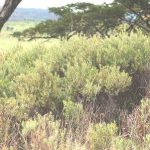TREE LIFE
APRIL 1980
MASHONALAND CALENDAR
Tuesday 1st April : Botanic Garden Walk, 1700 hours, meet at the car park.
Sunday 20th April : Home of Mr Curtis. Directions : Go out on the Arcturus Road. At approximately 26km peg turn right into Gardiner Road. 2km down this road you cross a bridge and Mr Curtis’ homestead is on the right. Time of meeting 0930 hours.. Meet at the carpark at Jameson Avenue and Eighth Street at 08945 hours and Greendale Shopping Centre on Artcurus Road at 0900 to share lifts.
Salisbury learner group will meet on Saturday, 12th April, 1980 at Coronation Park at 0930 hours. Please phone Mrs. G. Masterson on 303453 for further details.
Weekend at Umniati – Saturday and Sunday 17th and 18th May : The May outing will be a two day trip to Umniati. The bus will be at the Monomotapa Parking ground at 00730 hours and we will leave at 0800 hours, arriving approximately 1000 hours at Umniati. The accommodation will be in the nature of camping except that we will be in houses where there is light and water, fridge and stove. You will need to bring a stretcher, sleeping bag, and picnic lunch for Saturday. The Umniati Club has kindly offered to supply a braaivleis on the Saturday evening and the bar, squash, tennis, swimming and bowls facilities will be available to us. The guest house staff will provide breakfast and lunch on Sunday.
Provided the bus is filled, the cost of the weekend will be $14 which includes bus fare, tea and dinner on Saturday, breakfast and lunch on Sunday.
We will leave Umniati on Sunday 18th May at approximately 1500 hours to arrive at Monomotapa at about 1730 hours.
Will those wishing to join this outing please phone Mrs. Lola Irvine – 21362. the fee will have to be paid before the 14th May to ensure a seat on the bus.
NOTICE OF SPECIAL GENERAL MEETING
Notice is hereby given that in terms of clause 18 of this Society’s constitution a special general meeting will be held on Sunday 20th April, 1980 to consider the change of name of this Society. This Special Meeting will be held before we commence our normal monthly field trip.
Members will recall that this item was on the agenda for the AGM held in February last and that meeting deferred a decision to a Special General Meeting because the opinion of that meeting was that we should find a way to identify our Society with the Flora Zambesiaca area, and since then your committee has racked its “corporate brain” to find a way to achieve this.
The name ‘TREE SOCIETY OF THE FLORA ZAMBESIACA AREA’ is not only too much of a jaw breaker, but too presumptuous unless we were to enter into prior consultation with the botanical authorities in every state which comprises the Flora Zambesiaca.
The proposal therefore submitted for consideration by the Special General Meeting is that we follow precedent and as the name of this nation changes, the name of the Society changes with it. We are a national body, we have three branches and individual membership spread into each province and to honour the commendable spirit of the February AGM, we would like to extend to our counterparty in Maputu, Gaberone, Lusaka and Lilongwe and invitation to cooperate with us in some form of larger “Tree Society” concept to cater for the whole “Flora” area.
WHAT’S IN A NAME
Observant readers will have noticed a change in the heading of this Newsletter, secondly we have never been the T.S. of Z.R., but in keeping with the observations in the previous paragraph, we have been, “de facto” the T.R. of Z.R. Firstly, the name TREE LIFE, I am throwing out a challenge to our membership to suggest a name for this journal. After nearly three decades of existence as a “newsletter” I would like to see us graduate to being a named journal.
This is not more ‘empire building’ within our Society, we must put out a periodic newsletter to keep members informed of our programme and in putting out this information we must make it as interesting as possible with reports back and items of botanical and environmental interest, always subject to the economics of production. also, as in the previous item above, I referred to our “international” responsibilities in the F.Z. are, we are not unmindful of our international responsibilities of this country and beyond the limitations of our membership, and in this context in terms of the objects of our association we want to cooperate with everybody and individuals working in the same direction.
FINANCIAL REPORT FOR THE SOCIETY FOR THE YER ENDING 31.12.1980
As explained in the last newsletter the above was not available for the AGM it is now published with this issue. As it was not available for discussion at the AGM should any member have any query on our balance sheet we will be happy to answer some.
BOTANIC GARDEN WALK – 4TH March 1980

Euphorbia halipedicola. Photo: Bart Wursten. Source: Flora of Zimbabwe
With a view to our proposed trip to Umniati, Tom Muller agreed to spend two Tuesday Walks covering Lowveld vegetation. The first was to examine the South East species. No only do many of the species grow well on the Highveld, but we were impressed to see so many uncommon plants surviving in the garden. A healthy Euphorbia halipedicola, , recorded only once in this country was in flower. The rare Grewia tenax with small symmetrical leaves was compared to G.bicolor, with its distinctively bluish leaves, G.macronata with its long dotted leaves and G.hemamita, a large leafed species.
On interest was the lowveld subspecies of Diospyros lycioides and the lowveld type Brachystegia glaucescens which Mr Muller felt may finally be classified as a distinct sub species. Several Cordias were seen, C.ovalis was in bright orange fruit which proved irresistible to wild fruit connoisseurs. Though initially sweet, the aftertaste proved unpleasant, but obviously not poisonous. C.goetzii has very distinctive fluted bark, not unlike guava and long smooth leaves.
Also interesting were the specimens of Natal coastal trees which form an intrusion into the south east Wrightia natalensis and Sideroxylon inerme (rather like Mimusops in appearance) being two seen.
Gyrocarpus americanus caused discussion. It is the same species as occurs in South America and Australia and is just one of the many examples given as evidence of the Gondwanaland theory. Oncoba spinosa was still beautiful in flower and the Euphorbiaceous Sapiium integerrimum in heavy fruit. Mr Muller stressed however that some species have never flowered or fruited in the garden. The lowveld banana, Entandophragma caudatum and the Scotsman’s rattle, Amblygonocarpus andongensis being examples.
Our thanks to Mr. Muller for his time and interest and we look forward to party two of the “lowveld trees”.
-George Hall
MARCH SUNDAY OUTING 16th March

Securidaca longepedunculata. Photo: Bart Wursten.Source: Flora of Zimbabwe
On Sunday 16th March about 30 members walked over the Golden Quarry Hill on Warren Farm on the Bulawayo Road. The hill is of banded ironstone and rises to an altitude of 4950 feet A.S.L. approx. 150” above the surrounding plain. Regeneration in the area has been good since the mine stopped working. We noted over 40 species of particular interest being Monotes ungleri and tall Ochna puberula (about 15”), a very nice colony, evenly distributed on hill and slopes of Tapiphyllm velutinum, some of which bore ripe fruit, and we noted that the bark of this plant was very distinctive, coming away in thick flaky layers. Mukwa (Pterocarpus angolensis) became more frequent on top of the hill. One nice young violet tree (Securidaca longepedunculata) was found also on the top.
The fact that the more varied and interesting vegetation was found higher on the hill probably reflects the fact that the rock on the higher ground give considerable protection from the annual burn which is very fierce lower down.
MISS ISABEL MCCALMAN of Matabeleland Branch writes to comment on the March newsletter – “Marula kernels when I was travelling Matabeleland for the Federation of African Women’s’ Clubs in 1963/64, the American ladies of the Brethren of Christ Missions at Mtshabezi and Wanezi Missions used to regale me with the most delightful sponge cakes with fillings of surface coatings, consisting mainly of marula kernel crumbs, such adjuncts making a confectionery out of this world”.
Simply eating plain kernels was a delight all too infrequently experienced, and this is easily understood when one attempts to remove the kernels from the nuts. Ordinary nut crackers are of little use, either making no impression or shattering the whole nut and kernels, hammering on an anvil had much the same result. Some success came from squeezing a vice and picking out the ‘eyes’ with a nail. Arduous work to produce three small nutlets!
This makes it easy to understand why the supply of even a small number of kernels is not found often – especially when it is noted that removal of kernels is usually performed by old grandmothers sitting on granite dwalas and leisurely hammering away at nuts with some suitable stone and picking out the kernels with large mimosa thorns. In the early sixties, those old “gogos, if found, might be persuaded to sell one cupful, a day’s work for 6 pennies.
Bearing in mind that these kernels were a delicacy to those toothless old women, it was easy to understand why so few came on the market as additionally they were also used in the preparation of vegetable relishes, kernels were used as candles, and were part of every woman’s cosmetic requirements.
Recently I have been told of, but have not yet tried, an easier (and I use the word circumspectly) was of extraction involving boiling.
Boscia albitrunca regrettably this species is not found in the Matopos/Essexvale area but many trees are seen in the basaltic areas around Nyanyadzi near Birchenough Bridge and across the lower Msingwane Bridge south of Manama Mission. It is well known to farmers in the Transvaal who have frequently used the roots which they dry, pound in mortars, grind and roast to produce coffee substitute. In times of famine people in the Manama and Kezi areas dig the smaller roots, split them into suitable sizes, dry in the sun, pound and then grind the dry material to make an extremely nutritious porridge. Possibly this is not more commonly prepared because of the labour entailed, and the relatively small amount of roots available. In these areas with the general absence of good grazing, goats and cattle strip leaves, twigs and bark leaving the tree boles spectacularly bar and light coloured – hence the name “Witgatboom”.
BINGA SWAMPFOREST” : ARCTURUS – Last visited on 22nd January 1980 with Messrs Richards and Shepherd of Henderson Research station.
Fences OK. Only one “mombi” seen in the distance, but the grass around the inner fence (i.e. the fence around the perimeter of the forest) has clearly been grazed. The vlei is rather dry for this time of the year; we tramped dry-shod over a large part of it.
Position re Mauritius thorn heartening. It is coming up again here and there, as was to be expected, but there seems to be no massive regeneration. This would be an excellent time to pull scattered thorn seedlings, and to spray the occasional denser concentrations and also the other aliens – cedrilla, syringa and lantana. Unfortunately, for security reasons, we have been advised to keep away from the forest for the time being.
A fire swept through the surrounds in the late winter of last year, scorched some of the outlying Vernonias, but apparently did not penetrate the forest. The young trees, Maesa, Rauvalfia, Celtis, Acacia, Ziziphus and Dovyalis – which I planted experimentally in 1978 outside the forest, and were flourishing in July last, al seem to have been destroyed.
The big donga seems to be showing light signs of improvement, in that in places there is now some vegetative cover.
The exposed part of the forest, burnt 5 years ago, is densely populated with course grasses and weeds of all sorts, with a fairly promising number of “desirable” plant species struggling through (e.g. Maesa, Vernonia, Celtis, Rhus, Rauvolfia). The density of grass and weed, and in one part, Phragmites, seems to be having an inhibiting effect on the Mauritius thorn which presented a renewed threat last year and the year before, and had to be sprayed.
In the main forest the ground cover of attractive Oplismanus (forest grass) has increased tenfold since the cattle have been kept out, and there is a reasonable amount of regeneration of species such as Celtis africana, Bequaertiodendron magalismotanum, Rhamnus prinoides, Diospyuros lycioides and, to a lesser extent, Ilex mitis. North of the gate there is quite a big colony of Adenostramma mauritianum (family Compositae), a herb with a small off white flower which, I understand, occurs in Chirinda Forest. This is the first record of its occurrence in the Central geographical zone of Flora Zambesiaca.
Near the main stream beyond the forest proper, Catha edulis is seeding itself.
Connex has recommended a change in the grazing programme in the vlei catchment, the fencing of the donga, and the construction of a diversion embankment at the head of the donga. The damming of the donga was mooted several years ago y Mr. Chris Lightfoot during his term of office as President of the Tree Society. There is still no unanimity of the subject in official circles however, and the estimated cost, approaching $2 500, is unlikely to add to the appeal of the ides. The Department of Natural Resources will be putting the pros and cons to the NRB. My hope is that the donga will, at least, be fenced.
Our thanks are due to the Henderson Research Station and Mr Paul Richards in particular, for continued interest in, and help with, the control of alien plants.
MEMBERS VISITING DURBAN – will find Dix and Audrey Airey living at 270 Queen Elizabeth Avenue, Manor Gardens, Durban, 4001. We often hear from Dix and several members have been to see him when in Durban, and I am sure that Dix and Audrey would be happy to see any member visiting that part of the world.
MATABELELAND NOTES
Sunday April 6th – Please note that by popular opinion this outing has been postponed to Monday April 7th. Meet at Retreat Shopping Centre at 0830 hours for the Matopos National Park, Bombata area +- 50km from Retreat; shady walks, interesting and varied vegetation.
Wednesday 9th April : Second Wednesday of the month, Hillside Dams, 1715 hour. There will be a demonstration of how to collect tree specimens given by Mr. B. Best. Meet at the car park, Impala Road entrance to the upper dam. (This is by kind permission of the Bulawayo Parks Department).
Sunday 4th May : To Khami area. Meet at Modern Motors, 11th Avenue, 0815 hours.
“Marula Biscuits” March Newsletter : With reference to the special biscuits prepared for your AGM each year, and also to Miss V. Deas’ article on Carob trees, you may be interested to know about our toothsome Tree Biscuits in Matabeleland. (This rather sounds as though a porcupine might be writing). However, these biscuits were made by adding to the basic biscuit recipe ground Ceratonia siliqua pos to produce a rich flavour and dark colour, and they have a Carya pecan nut on top. The roasting and grinding of the pods was carried out by Mr and Mrs B. Wheeler of Solusi College. Possibly the next step is to exchange tea recipes from the veld??
GEORGE HALL PRESIDENT



